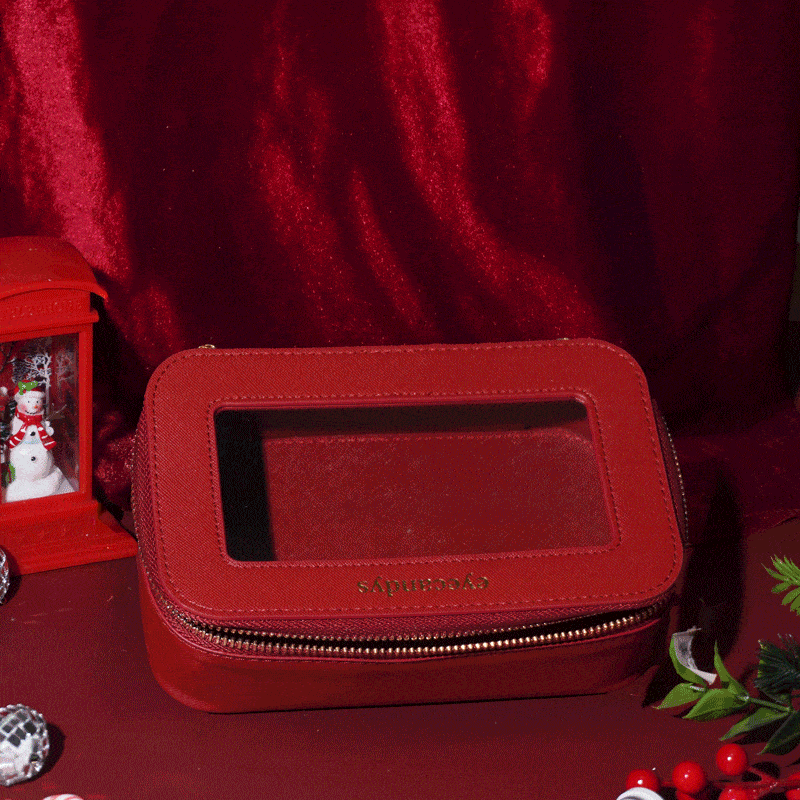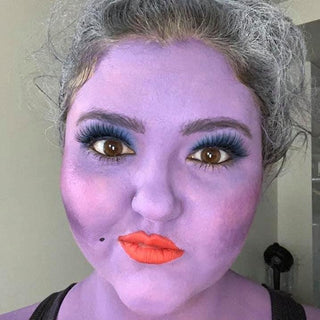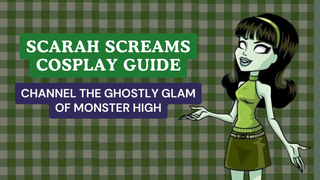Unleash Your Inner Beast: A Complete Guide to Crafting the Ultimate Werewolf Costume
Werewolves are one of the most iconic creatures in horror and fantasy, known for their fierce strength, wild nature, and terrifying transformations. From classic horror film depictions to modern fantasy interpretations, werewolves offer a wide range of creative possibilities for cosplay. Whether you’re looking to channel a traditional, feral wolf-man or a sleek, modern take on the werewolf legend, this guide will help you create the perfect werewolf costume. Get ready to transform under the full moon!
Why Werewolves Are the Ultimate Creature for Cosplay
Werewolves represent primal power and untamed fury. Their ability to shift between human and wolf forms makes them a captivating choice for cosplay. The visual transformation—from torn clothes and fur to sharp claws and fangs—makes them exciting to portray. Whether you're aiming for a classic Hollywood-style werewolf or a more fantastical version, the werewolf costume allows for a lot of creativity and personal interpretation.
Costume Components Outfit Overview
At the core of a werewolf costume is the balance between human and wolf. Depending on the type of werewolf you’re going for, you’ll need to decide whether your werewolf is fully transformed or in mid-transformation. The following elements will guide you through building the perfect look.
Classic Werewolf
The classic werewolf, inspired by horror films of the 1940s and beyond, is a monstrous creature caught between human and beast.
-
Torn Clothes: Classic werewolves are known for their transformation shredding through their human clothes. Start with an old flannel shirt or pair of jeans and tear them strategically to show fur underneath.
-
Fur: Use faux fur to cover visible parts of your body, such as your chest, arms, and legs. You can glue fur patches onto your skin or the inside of your torn clothes to create the illusion of a werewolf bursting out.
-
Claws and Fangs: Sharp claws and fangs are essential for a werewolf look. Add claw extensions to gloves or create clawed hands using prosthetics. Don’t forget the fangs for a fierce, snarling appearance.
Modern Werewolf
The modern werewolf is often depicted as a sleek, powerful figure, retaining some human features while showcasing signs of the wolf within.
-
Clothes: Go for a more stylish, fitted look—perhaps a leather jacket with strategically torn areas, or a casual outfit that incorporates shredded fabrics to represent the transformation.
-
Fur Details: Instead of going full-on fur, you can add subtle patches along the arms, chest, or neck to hint at the ongoing transformation.
-
Claws and Fangs: Keep the claws sharp but a bit more understated compared to the classic werewolf. Small fang prosthetics or subtle elongated nails can give your modern werewolf a more refined but dangerous look.
Fantasy Werewolf
Fantasy werewolves often come from magical or medieval-inspired settings, where they may be part of a warrior tribe or a cursed creature of legend.
-
Armor or Robes: Mix tattered medieval clothing or leather armor with wolf-like elements. Use leather belts, metal accents, and cloth torn at the edges to give a worn, battle-ready appearance.
-
Magical Details: Add mystical symbols, glowing elements, or enchanted jewelry to signify the magical nature of the fantasy werewolf. Embroider your outfit with runes or other magical designs.
-
Fur and Claws: Go for stylized fur details that blend seamlessly with the fantasy theme. Create intricate claws or use magical props like glowing stones or enchanted weapons to complete the look.
Gothic Werewolf
If you’re going for a darker, more elegant twist on the werewolf, the gothic look will add an element of haunting sophistication.
-
Victorian-Inspired Clothing: Mix high-collared shirts, waistcoats, or cravats with tattered, worn details. Think of a Victorian nobleman mid-transformation.
-
Lace and Velvet: Incorporate rich, dark fabrics like velvet and lace to give your werewolf a mysterious, gothic edge.
-
Fur and Claws: Opt for dark gray or black fur with sharp, long claws. This will add a more sinister and dramatic appearance to your costume.
Accessories
Ears and Tail
-
Werewolf Ears: To create realistic wolf ears, you can use a headband with attached fur-covered, pointed ears. You can either make your own or buy a pair that complements the overall costume.
-
Tail: Attach a faux fur tail to your belt or costume. A long, furry tail will move with you, adding fluidity and realism to your werewolf movements.
Claws and Fangs
-
Claws: Gloves with claw attachments are a great option for adding realism. You can find ready-made werewolf gloves or create your own with claw prosthetics attached to the tips of gloves.
-
Fangs: Werewolf fangs are key to completing the transformation. Custom-fit fangs will provide the most natural, comfortable fit. Make sure they are securely in place for snarling photos and character acting.
Contacts
-
Yellow or Red Contacts: Werewolves are often portrayed with glowing, animalistic eyes. Yellow, amber, or red contacts will give you a predatory, terrifying stare.
-
Tips for Contacts: Make sure to buy high-quality, comfortable contacts designed for cosplay. Practice putting them in beforehand and bring eye drops for comfort throughout the day.
Makeup and Body Paint
The right makeup can take your werewolf costume from good to terrifyingly realistic. Here’s how to enhance your look using face paint and prosthetics.
Classic Werewolf Makeup
-
Fur and Face: Apply fur patches to your face or use makeup to simulate a more wolf-like appearance. Contour your face to make your cheekbones and jawline appear sharper and more angular. Use browns and grays to give your skin a shadowy, fur-like texture.
-
Shadows and Shading: Darken areas around the eyes, nose, and forehead to give the appearance of a feral, wild beast emerging. Focus on creating deep-set eyes and hollowed cheekbones.
Modern Werewolf Makeup
-
Subtle Transformation: Focus on subtle elements of the transformation. Create fur details along the edges of your face, chin, and forehead, but keep it minimalist. You can also use darker eye makeup to give your eyes a glowing, animalistic look.
-
Detailed Eyes: Emphasize your eyes with darker shadows and eyeliner to create a menacing, focused look. Thick, heavy eyebrows will add to the intensity.
Fantasy Werewolf Makeup
-
Magical Accents: Use body paint to add mystical or tribal symbols to your face and arms. You can create glowing runes or enchanted markings to indicate your werewolf’s magical origin.
-
Fur Details: Enhance fur patches on the arms and chest using body paint for a more stylized, fantasy-like effect.
Gothic Werewolf Makeup
-
Pale and Dark Contrast: Create a stark contrast between pale skin and dark, shadowy features. Highlight your eyes with deep purples, blacks, or reds, and use fake blood for a more gruesome effect around the mouth and claws.
Cosplay Contacts
Adding colored contacts can dramatically enhance the werewolf transformation:
-
Classic Werewolf: Yellow, amber, or red contacts will give your eyes the animalistic, predatory look associated with werewolves.
-
Modern Werewolf: Subtle yet intense yellow or green contacts will suggest a human on the verge of transformation.
-
Fantasy Werewolf: Opt for exotic shades like silver, glowing blue, or violet to create a magical, otherworldly gaze.
-
Gothic Werewolf: Red or black contacts can intensify a more sinister, haunted look.
Props
Props can help bring your werewolf character to life and enhance the cosplay experience:
-
Fake Weapons: Fantasy werewolves might carry medieval weapons like swords or enchanted axes, while modern werewolves could wield chains or other symbols of restraint.
-
Chains or Shackles: If your werewolf is struggling with their transformation, consider adding chains or shackles around your wrists or ankles to symbolize the beast breaking free.
-
Bones or Skulls: Add a macabre touch by carrying a prop skull or bones to highlight the feral nature of your werewolf.
Poses and Characterization
To fully embody the werewolf persona, you’ll need to master your body language:
-
Crouching and Prowling: Werewolves are often depicted as predatory creatures. Practice crouching low, leaning forward, and prowling as you move. Keep your body tense, as if ready to spring into action.
-
Snarling and Growling: Werewolves are known for their ferocity. Practice growling, baring your fangs, and showing off your claws. Crouch low or throw your head back as if howling at the moon for dramatic effect.
-
Aggressive Postures: Take wide stances, hunch your shoulders, and use exaggerated hand gestures to show off your claws.
Buying vs. DIY Pre-made Costume Options
For those looking to save time, pre-made werewolf costumes are available in stores, especially around Halloween. You can find full suits with fur, claws, and masks ready to go. Personalize them with your own makeup and accessories for a custom touch.
DIY Costume Ideas
If you’re feeling crafty, creating your own werewolf costume can be a rewarding experience. Here are a few steps for a DIY werewolf costume:
-
Clothes: Find an old shirt and pants, and use scissors to tear and distress them. This will give the appearance that the clothes ripped during the transformation.
-
Fur: Purchase faux fur from a fabric store and sew or glue patches onto your costume. Focus on areas like the chest, arms, and legs.
-
Accessories: Use gloves with attached claws, fangs, and prosthetic ears to complete the transformation. You can make ears and a tail using wire and faux fur.
Final Tips for a Successful Cosplay
-
Comfort and Practicality: Make sure your costume is comfortable enough to wear for an extended period. Check that your fur pieces are securely attached and won’t come off during movement.
-
Makeup Touch-ups: If you’re using face paint or prosthetics, carry some extra makeup and adhesive for touch-ups throughout the day. Werewolf costumes can get messy, especially with long wear!
Werewolves are a fierce and versatile choice for cosplay, offering endless opportunities to unleash your creativity. Whether you opt for a classic werewolf look, a sleek modern version, or a fantasy-inspired beast, focus on the key elements: fur, claws, fangs, and wild, intense energy. By blending human and animal features, you’ll bring the terrifying transformation of a werewolf to life. Get ready to howl at the moon and make a fierce impression!











